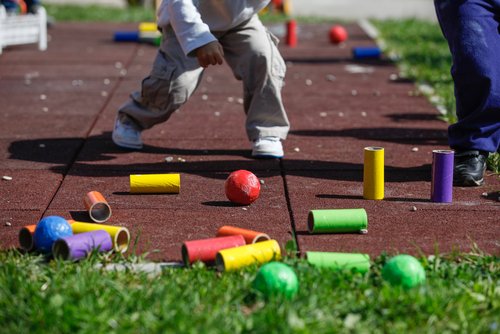The combination of standard rehabilitation therapy with Cerebrolysin was found to improve the gross motor skills of pediatric patients living with cerebral palsy (CP), according to results published in the journal Acta Neurologica Belgica.
Patients with CP caused by perinatal brain injury due to oxygen deprivation can present several symptoms, including mental retardation, seizure, speech delay, and behavioral problems. But a major feature of this condition — and the most challenging — is motor disability.
Treatment often requires multidisciplinary teams, addressing different therapeutic interventions to rehabilitate the child’s functions and improve the quality of life.
Produced by EVER Neuro Pharma, Cerebrolysin is a compound derived from purified porcine (pig) proteins. It has been shown to have similar activities to that of human neuro-proteins known to protect the brain and promote its natural repair mechanisms.
Its therapeutic potential has been shown in preclinical and clinical models of several neurological diseases, including Alzheimer’s disease, stroke, and traumatic brain injuries. Results from controlled clinical trials and years of clinical use have demonstrated that Cerebrolysin is safe and well-tolerated by patients.
Results of a Phase 2 CerebroHIE trial (NCT01059461), featured in the study “Safety and Efficacy of Cerebrolysin in Infants with Communication Defects due to Severe Perinatal Brain Insult: A Randomized Controlled Clinical Trial,” was published in the Journal of Clinical Neurology. It demonstrated that Cerebrolysin could improve communication skills in young infants with CP. However, the effects of the compound in the recovery of motor skills in these patients were not addressed.
Now, in the study titled “Effect of cerebrolysin on gross motor function of children with cerebral palsy: a clinical trial,” researchers from Isfahan University of Medical Sciences, Iran, conducted a trial to evaluate the effectiveness of Cerebrolysin in overcoming motor dysfunction in children with CP.
A total of 50 pediatric patients with CP and lower- or upper-limb dysfunction (also known as spastic diplegic or quadriplegic CP) were included. All patients were undergoing standard rehabilitation therapy. Participants were randomized to receive Cerebrolysin or placebo in addition to their rehabilitation therapy. Cerebrolysin was administrated via intramuscular injection with a single daily dose for 10 days, followed by weekly injections for four months.
After evaluation using the gross motor function classification system-expanded and revised (GMFCS-E&R), researchers found that the group treated with Cerebrolysin had decreased its GMFCS from 3.16 at baseline to 2.1 after four months of treatment. The placebo group showed no significant improvement of their GMFCS, form 3.28 at baseline to 3.16. The higher the GMFCS score, the greater the impairment in motor function.
Overall, these results demonstrate the therapeutic potential of combined Cerebrolysin and rehabilitation therapy to improve gross motor dysfunction in CP patients.
“This finding is consistent with the neurotrophic and neuroprotective effects of CBL [cerebrolysin], which have been reported in various clinical trials in other neurological disorders,” the authors wrote. “Further studies are recommended to establish the value of continued neuroprotection and to determine the pharmacokinetics/dynamics of CBL in this group of patients.”

